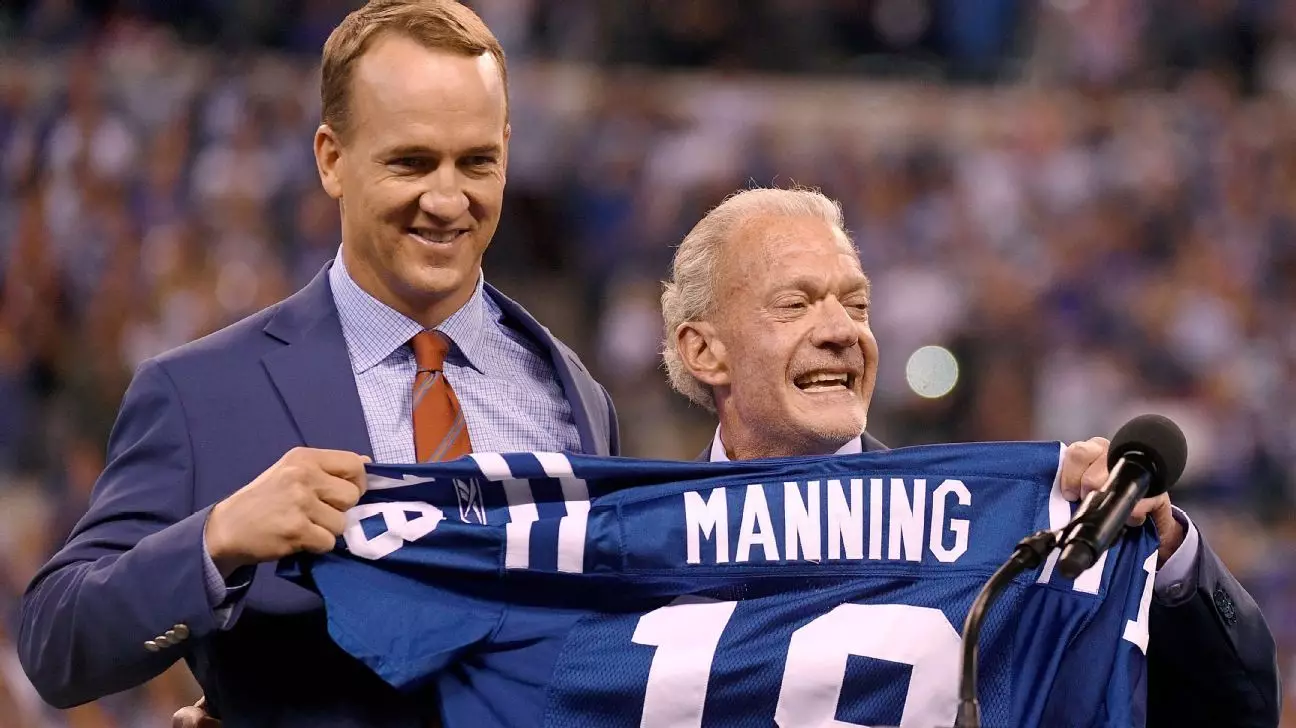Peyton Manning’s departure from the Indianapolis Colts in 2012 marked the end of an era, but it also highlighted the substantial metamorphosis that Indianapolis underwent during his tenure. The city, once dominated by basketball culture and the roar of engines at the Indianapolis 500, began to see a remarkable shift toward football as a prominent sport. Peyton Manning, the face of the Colts for 14 years, attributes much of this transformation to Jim Irsay, the Colts’ owner since 1997. The influence of Irsay’s vision resonated deeply within the city, and his recent passing at the age of 65 has rekindled discussions about his profound impact on the city’s sports landscape.
When Manning arrived in 1998, Indianapolis was not the football powerhouse it has come to be known for. The local sports milieu was largely dominated by basketball, which reigned as the primary passion for residents. The Colts were but a mediocre team at that time, affecting the level of fandom and engagement. According to Manning, Irsay’s strategic commitment to winning fundamentally altered that narrative; he focused on assembling talent and fostering a competitive environment. The hiring of Bill Polian as general manager was a pivotal moment. Polian had a well-documented history of transforming struggling franchises and brought a vision that would drive the Colts into the national spotlight.
A New Era of Expectations
With Irsay at the helm, the Colts adopted a winning mentality that resonated throughout the community. Drafting star players like Edgerrin James and retaining fan favorites like Marvin Harrison played crucial roles in creating a cohesive and powerful football team. It was this commitment to excellence and the desire to win that turned the Colts into legitimate contenders for the Super Bowl. Manning himself noted the immediate transformation; the Colts rapidly evolved from obscure underdogs to respected adversaries within the NFL. Suddenly, winning was expected, and at that moment, Thursdays and Sundays became sacred times for communities to unite as fans wearing blue and white.
This renaissance was not merely confined to the field; it spilled over into the cultural identity of Indianapolis. High school football received a new lease on life as local pride became intertwined with the success of the Colts. Fans began to don jerseys with pride, and the stadium brimming with supporters showcased an unthinkable enthusiasm for the sport. The Colts had effectively transitioned Indianapolis from a modest sports town into a vibrant football city where the passion for the game began to flourish, overshadowing its former allegiances to basketball and racing.
The Stadium That Changed It All
In the early 2000s, amid rumors that the Colts might relocate, Irsay’s commitment to keep the franchise in Indianapolis culminated in the construction of Lucas Oil Stadium. The stadium would not merely serve as a home for the Colts but as a beacon of hope for a struggling franchise bolstered by its historic fan base. This development was key in stabilizing the team’s future and, by extension, Indianapolis’ aspirations to host major sporting events.
With the introduction of Lucas Oil Stadium, the Colts quickly solidified their presence, winning Super Bowl XLI in 2007 and establishing themselves as a dominant force in the league. This success paved the way for Indianapolis to host landmark events, including the Super Bowl in 2012 and the NCAA’s Final Four. The transformation of downtown Indianapolis into a hub for major sporting activities further solidified the bonds within the community, allowing residents to revel in their status as a significant player in the sporting world.
A Complicated Legacy
Manning’s complex relationship with Irsay is underscored by the bittersweet reality of their eventual separation in 2012. While Manning expressed gratitude for the opportunity Irsay provided, the decision to part ways was undeniably tough for both parties. Yet, their intertwined legacies remain undeniably profound in the context of Indianapolis’ sporting culture. Irsay’s vision and Manning’s talent drove the city to unprecedented heights, and together they redefined what it meant to be part of a community united by the love of a game.
As much as Manning remembers the triumphs, there is an unmistakable sense of nostalgia surrounding the challenges they faced together. Irsay’s commitment to the franchise not only redefined the Colts but also reshaped the very fabric of the city itself—a profound legacy worth commemorating.


Leave a Reply